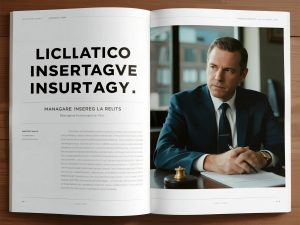Understanding Key Person Insurance Policies for Business Protection Modern businesses face unprecedented challenges in protecting their most valuable assets – their key personnel. Key person insurance policies represent a critical component of comprehensive business risk management strategies, providing essential financial protection when organizations lose vital employees whose expertise, relationships, and contributions are fundamental to operational success and revenue generation. These specialized insurance solutions address
the substantial financial disruptions that can occur when key individuals become unable to perform their duties due to death, disability, or other covered circumstances, ensuring business continuity and financial stability during challenging transition periods. Organizations across various industries recognize that certain employees possess unique skills, client relationships, institutional knowledge, or leadership capabilities that would be extremely difficult and expensive to replace, making their protection through appropriate insurance coverage a strategic business necessity. The implementation of key person insurance policies involves careful identification of critical personnel, assessment of their financial value to the organization, and selection of appropriate coverage amounts that reflect their contribution to business operations, revenue generation, and strategic objectives. These insurance programs typically provide death benefits, disability benefits, and sometimes additional coverage options that help organizations manage the financial consequences of losing essential personnel while maintaining operational stability and competitive positioning in their respective markets.Executive Disability Insurance for Leadership Continuity The protection of executive leadership through comprehensive executive disability insurance represents a fundamental aspect of corporate risk management, addressing the substantial financial and operational challenges that organizations face when key executives become unable to perform their duties due to illness, injury, or other disabling conditions. These sophisticated insurance solutions understand the unique value that senior executives bring to their organizations through
strategic decision-making, stakeholder relationships, market expertise, and leadership capabilities that directly impact business performance, competitive positioning, and long-term success. Executive disability insurance policies provide income replacement benefits, business expense coverage, and additional protection features that help organizations maintain financial stability while searching for suitable replacements or implementing succession plans during executive disability periods. The specialized nature of executive disability coverage addresses the higher income levels, complex compensation structures, and substantial business responsibilities that characterize senior leadership positions, ensuring appropriate benefit levels that reflect the true financial impact of executive disability on organizational operations. These insurance programs typically feature flexible benefit structures, comprehensive definition of disability terms, and additional coverage enhancements that address the specific needs of executive-level personnel and their organizations. The underwriting process for executive disability insurance involves detailed assessment of executive health status, job responsibilities, compensation levels, and organizational dependency factors that influence both coverage availability and premium calculations within the executive benefits marketplace.High-Value Life Insurance Solutions for American Executives
Sophisticated high-value life insurance USA solutions provide essential financial protection for high-net-worth executives and business leaders whose substantial income levels, complex financial situations, and significant business responsibilities require specialized insurance approaches that standard life insurance products cannot adequately address. These advanced insurance programs understand the unique financial planning needs, estate planning objectives, and business protection requirements that characterize high-value individuals, offering substantial death benefits, flexible premium structures, and additional policy features that align with sophisticated financial strategies and wealth preservation goals. High-value life insurance policies typically provide multi-million dollar death benefits, cash value accumulation opportunities, and tax-advantaged wealth transfer mechanisms that help executives protect their families, fund business obligations, and implement comprehensive estate planning strategies. The specialized underwriting process for high-value life insurance involves detailed financial analysis, medical evaluation, and lifestyle assessment procedures that ensure appropriate coverage amounts while managing insurance company risk exposures associated with substantial policy limits. These insurance solutions often feature flexible premium payment options, policy loan provisions, and dividend participation opportunities that provide policyholders with financial flexibility and wealth building potential throughout the policy lifetime. The claims handling expertise for high-value life insurance ensures that beneficiaries receive appropriate support and efficient claim processing when death benefits become payable, with specialized services that understand the complex financial and legal considerations associated with substantial life insurance proceeds.
Corporate Liability Insurance Protection for American Businesses
Comprehensive corporate liability insurance USA coverage provides essential financial protection for organizations operating within the complex American legal environment, addressing the substantial liability exposures that businesses face from various sources including third-party bodily injury claims, property damage allegations, professional negligence lawsuits, and regulatory violations that could result in significant financial losses and operational disruptions. These sophisticated insurance programs understand the unique liability landscape that American corporations navigate, with policy terms designed to address specific regulatory requirements, legal precedents, and jurisdictional variations that influence liability exposure management across different states and federal jurisdictions. Corporate liability insurance solutions typically feature multiple coverage components addressing general liability protection, professional liability coverage, product liability insurance, and employment practices liability protection that work together to provide comprehensive financial protection against diverse liability scenarios. The specialized coverage approaches address industry-specific liability concerns such as healthcare malpractice risks, technology errors and omissions exposures, manufacturing defect liabilities, and financial services regulatory violations that require customized insurance solutions based on particular business operations and risk characteristics. These insurance programs provide defense cost coverage, settlement payment protection, and judgment reimbursement for covered liability claims, helping organizations manage their legal expenses and financial exposures while maintaining focus on core business objectives. The risk management services offered by corporate liability insurance providers include access to legal counsel, safety engineering resources, and loss control specialists who help organizations prevent liability scenarios, respond effectively when they occur, and implement corrective measures following liability events.

Business Interruption Insurance for Operational Continuity
Strategic business interruption insurance USA protection provides critical financial support for organizations facing operational disruptions caused by covered perils such as natural disasters, equipment failures, supply chain interruptions, or other circumstances that prevent normal business operations and result in lost income, increased expenses, and reduced profitability. These essential insurance solutions address the substantial financial challenges that businesses encounter when they cannot operate at normal capacity, ensuring continued cash flow, expense coverage, and financial stability during recovery periods that might otherwise threaten organizational viability and competitive positioning. Business interruption insurance policies typically provide lost income replacement, extra expense coverage, and additional protection features that help organizations maintain financial obligations, retain key personnel, and implement recovery strategies while working to restore normal operations. The specialized coverage enhancements address industry-specific interruption concerns such as manufacturing production delays, retail sales disruptions, service delivery interruptions, and technology system failures that require tailored insurance approaches based on particular business models and operational characteristics. These insurance programs feature flexible coverage periods, comprehensive income calculation methodologies, and additional benefit options that ensure appropriate financial protection during various types of business interruption scenarios. The claims handling expertise for business interruption insurance involves detailed financial analysis, operational assessment, and recovery planning support that helps organizations maximize their insurance benefits while implementing effective business restoration strategies. The risk management services include business continuity planning assistance, disaster preparedness guidance, and operational resilience enhancement recommendations that help organizations reduce their interruption risks through proactive planning and comprehensive protection strategies.
Integrated Risk Management Strategies for Key Personnel Protection
The development of comprehensive integrated risk management strategies that combine key person insurance policies, executive disability insurance, and other protection components represents a sophisticated approach to organizational risk management that addresses the interconnected nature of personnel risks, operational exposures, and financial vulnerabilities that modern businesses face in competitive market environments. These integrated protection frameworks recognize that key personnel risks cannot be effectively managed in isolation but require coordinated insurance strategies that address multiple risk scenarios, provide comprehensive financial protection, and support business continuity objectives through various challenging circumstances. The strategic integration of personnel protection insurance involves careful analysis of organizational dependency relationships, assessment of cumulative risk exposures, and development of coordinated coverage structures that eliminate gaps, reduce overlaps, and optimize protection efficiency across different risk categories. These comprehensive programs typically feature aligned policy terms, coordinated benefit structures, and consistent claims handling procedures that facilitate efficient risk management and streamlined administrative processes. The specialized risk assessment services for integrated personnel protection include dependency analysis, succession planning evaluation, and financial impact modeling that help organizations understand their key personnel risks and develop appropriate protection strategies. The ongoing program management ensures that integrated personnel protection remains aligned with evolving business operations, organizational changes, and market conditions that affect key personnel risks and appropriate coverage needs over time.
Financial Planning Considerations for Key Personnel Insurance
The implementation of effective financial planning strategies that incorporate high-value life insurance USA solutions and other key personnel protection components requires careful consideration of tax implications, funding mechanisms, and benefit optimization approaches that maximize protection value while minimizing financial costs and administrative complexity for both organizations and covered individuals. These sophisticated financial planning approaches understand the complex interaction between insurance benefits, tax regulations, and business financial objectives, ensuring that key personnel protection strategies align with broader organizational financial goals and individual wealth management objectives. The tax considerations for key personnel insurance involve analysis of premium deductibility, benefit taxation, and estate planning implications that influence appropriate policy structures, ownership arrangements, and beneficiary designations for optimal tax efficiency. These financial planning strategies typically address premium funding options, benefit coordination mechanisms, and policy administration procedures that ensure sustainable protection programs while managing cash flow impacts and administrative requirements. The specialized financial analysis services include cost-benefit evaluation, return on investment calculations, and alternative funding comparison studies that help organizations make informed decisions about their key personnel protection investments. The ongoing financial monitoring ensures that key personnel insurance programs remain cost-effective, tax-efficient, and aligned with changing business financial circumstances and regulatory requirements that affect insurance program economics and optimization opportunities.
Implementation Best Practices for Key Personnel Protection Programs
The successful implementation of comprehensive key personnel protection programs requires adherence to established best practices that address program design, policy selection, administration procedures, and ongoing management requirements that ensure effective risk transfer, appropriate coverage levels, and efficient program operation throughout the policy lifetime. These implementation best practices recognize that key personnel protection involves complex insurance products, sophisticated risk assessment procedures, and ongoing management requirements that demand professional expertise and systematic approaches to achieve optimal results. The program design best practices include thorough key personnel identification, comprehensive risk assessment, and careful coverage selection that ensures appropriate protection levels while managing premium costs and administrative complexity. These implementation strategies typically feature detailed documentation procedures, clear communication protocols, and regular review schedules that maintain program effectiveness and ensure continued alignment with organizational objectives. The specialized implementation services include policy procurement assistance, underwriting support, and claims management guidance that help organizations navigate the complex insurance marketplace and secure appropriate protection for their key personnel. The ongoing program administration best practices address premium management, policy maintenance, and benefit coordination requirements that ensure continued coverage effectiveness and compliance with insurance contract terms and regulatory requirements that govern key personnel protection programs.




